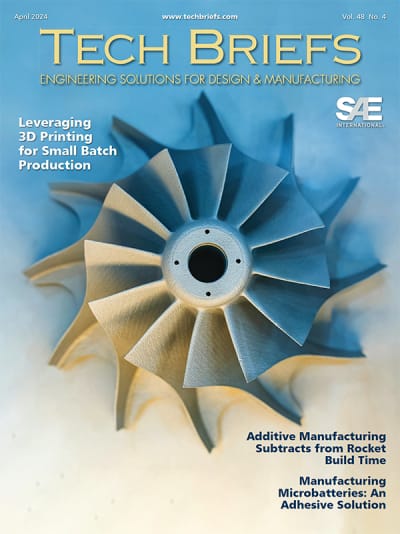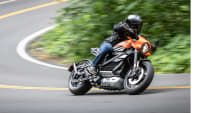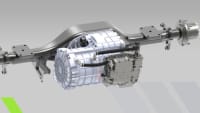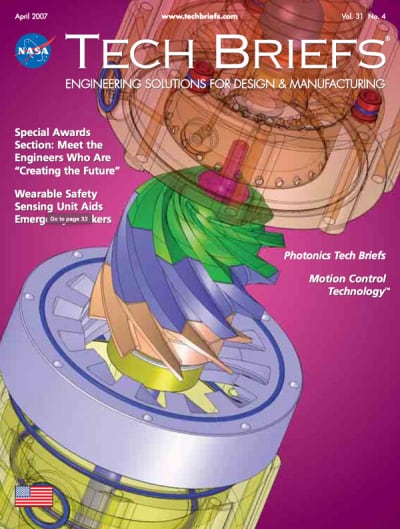A streamliner motorcycle designed and built by Sierra Design Engineering and BUB Enterprises achieved a new world-record speed of 350.884 miles per hour last year at the Bonneville Salt Flats in Utah. In 1989, the original engine and transmission were designed by Joe Harralson of Sierra Design Engineering, with the rest of the streamliner being designed and built by BUB Enterprises.
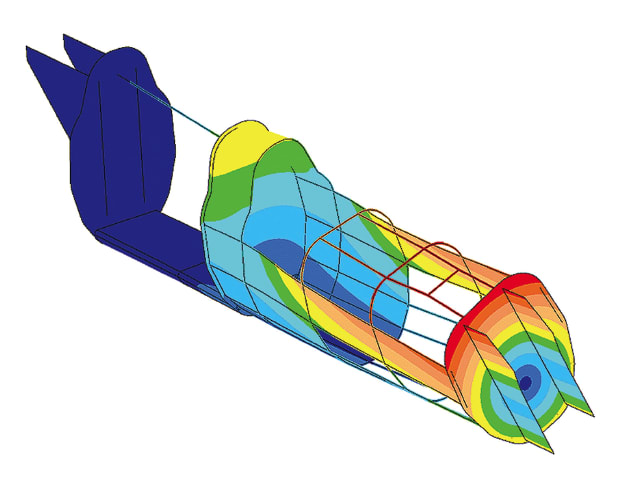
Seventeen years ago, PC-based CAD was in its infancy, and the capabilities of FEA software were limited. Many of the major engine components were analyzed with ALGOR FEA software, including the crankshaft, which was particularly critical because the engine is a 90-degree V4 with an uneven firing order, which produces strong torsional loads.
The engine produced over 420 horsepower naturally aspirated; however, the speed record proved elusive. After many years of computer simulations and testing, the streamliner was found to be too heavy and had several aerodynamic problems. Work on the frame, swing arm, and wheels took advantage of the FEA software’s integration with SolidWorks CAD models — all of the parts were first modeled in SolidWorks and then captured directly in the FEMPRO interface for analysis.
A completely new streamliner body was designed, and the new body was fabricated from Kevlar® and carbon fiber in a sandwich construction using Nomex® honeycomb as the core. [Kevlar and Nomex are registered trademarks of E.I. du Pont de Nemours and Company or its affiliates.] Until that time, land speed record motorcycles had used a tubular steel frame with a separate body that typically was fiberglass. In this case, the body became the frame in a manner similar to modern Formula One racecars.
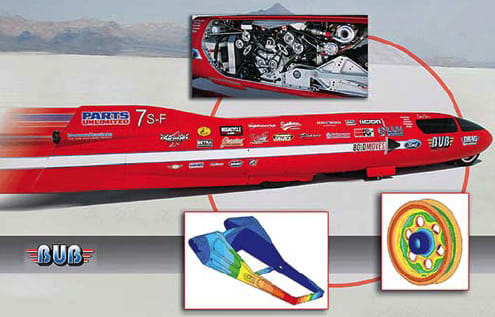
Harralson performed comparative analyses between the old steel tube frame and the new composite frame. One determined, and the new carbon fiber design was found to be much stiffer than the original steel tube design, although significantly lighter. Both of the actual frames were tested, and the measured torsional stiffness was within 5 percent of the predicted value in both cases.
Similar modeling and testing was done on the rear suspension swing arm. In this case, FEA helped to identify a design problem. The original design was a welded steel piece, while the new design was machined from 6061-T6 aluminum. The FEA model was far stiffer than the measured values for the aluminum swing arm. Further investigation revealed that there was a problem with the actual swing arm. In the computer model, the two sides are joined by a large cross piece, which was assumed to be solidly attached. In the actual swing arm, this cross piece was simply bolted in place by a fairly small number of bolts. It became clear that this bolted connection was not stiff enough, and was the reason for the low stiffness of the actual part. This also explained bolts that had come loose and, in one case, broke — problems that originally were attributed to failing to tighten the bolts correctly. Once the bolted joint was redesigned, the swing arm stiffness agreed closely with the computer model, and no further problems were experienced.
FEA also was used to analyze the wheels for the streamliner. Since the wheels are turning at over 3,500 rpm, centrifugal stresses were a concern. Models were run with radial and side loading, as well as spinning. The proof of the analyses was evident during the record-breaking runs.
This work was done by Joe Harralson of Sierra Design Engineering, using software from ALGOR, Inc. For further information, visit http://info.hotims.com/10966-122.
